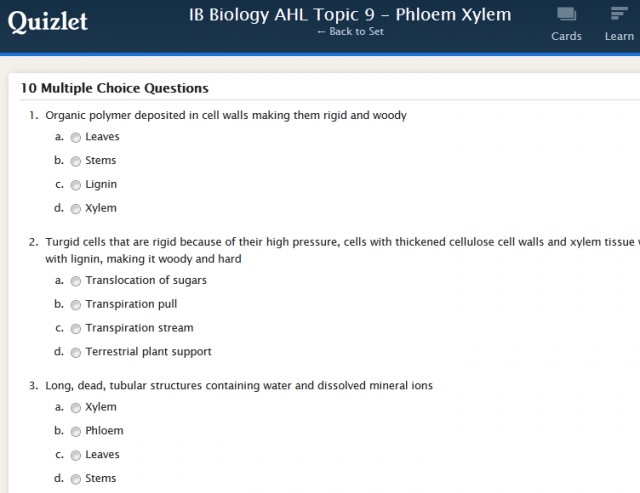Leaf stomata & transpiration

What are the special adaptations of leaf structure, and what is the stomata's dilemma? This activity uses a short video introduction to the roles of cells in a leaf and note taking about leaf structure and function to reveal these features. The function of stomata is linked to carbon dioxide absorption and also to the problem of water loss. Finally, some simple questions test knowledge at the end.
Lesson Description
Guiding Questions
How is a leaf adapted for its role in plants?
Is the top of a leaf the same as the bottom?
How do leaves move water?
What are stomata and what do they do?
What are the similarities between plant leaves and human lungs?
Activity 1 - Video introduction
For students preparing for 2015 exams it will be prudent to include the structure and function of the tissues in a leaf in addition to the vascular cells in the stem and root. Certainly the role of stomata
Watch this short video first to introduce the functions of the cells in a leaf. This includes: absorption of light, gas exchange, support, water conservation, and the transport of water and products of photosynthesis.
![]() Leaf Structure lesson from The Fuse School on Youtube
Leaf Structure lesson from The Fuse School on Youtube
Activity 2: The structure and function of leaves.
Complete this worksheet activity to record some concise notes about the structure of a leaf. This includes identification of different plant cells, xylem, phloem, pith and epidermis and an understanding of how water and carbon dioxide travels through a leaf.
![]() Leaf structure and function worksheet
Leaf structure and function worksheet
Activity 3 Leaf Structure Quiz
In order to explain how the particular features of xylem and phloem carry out their function in the plant it is important to know a little about how leaves work. These questions test a few basic principles the test is self marking and can be regenerated in a variety of configurations.
Teachers notes
Lesson Objectives
Understandings:
- To introduce the structure and function of the specialized cells of a leaf
- To understand the the movement of water and carbon dioxide through a leaf
- To know that a leaf uses guard cells to open and close stomata and control the rate of transpiration.
In the new IB guide the structure and function of the tissues in a leaf have been removed from the requirements. However the details of the structure and function of the phloem and xylem have been added. Students will need a better understanding of transpiration stream and translocation through the cells of the vascular tissue. This is why the video and lesson activities here focus on xylem and phloem at the expense of other leaf cells and photosynthesis. Of course the cells of the leaf and the stomata are important for transpiration, so leaves cannot be ignored completely
The Teacher support material states that these details of stomata are not included:
- State that guard cells can regulate transpiration by opening and closing stomata.
- State that the plant hormone abscisic acid causes the closing of stomata.
- Explain how the abiotic factors light, temperature, wind and humidity, affect the rate of transpiration in a typical terrestrial plant.
But that there is the following addition:
- Design of an experiment to test hypotheses about the effect of temperature or humidity on transpiration rates.
Clearly this will be a matter for individual teachers to decide, but I think it's best to explain the biology of the leaf so my students can understand how temperature affects evaporation of water into air space and how the difference in humidity between the air spaces and the air surrounding the leaf affects the diffusion of water vapour out of the leaf. These are important concepts if you are going to design an experiment.
Notes about the new guide and plants
Other aspects of plant structure not required in 2016 exams and not covered in this lesson are:
- Compare Dicot and monocot leaves; include:
- parallel versus net-like venation in leaves,
- modification of roots stems and leaves for storage or other functions
- comparison of growth due to apical and lateral meristems
- tissue distribution diagrams of the distribution of vascular tissue in stems,
- number of cotyledons,
- floral organs in multiples of 3 in monocot versus 4 or 5 in dicot,
- fibrous adventitious roots in monocot versus tap root with lateral branches in dicot

 IB Docs (2) Team
IB Docs (2) Team

